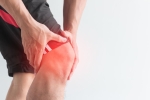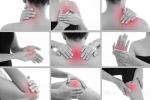Home » Blog
| Stem Cell, PRP, Acupuncture in Queens & Long Island, New York
Blog | Stem Cell, PRP, Acupuncture in Queens & Long Island, New York
Your neck is made up of vertebrae that extend from the skull to the upper torso. Cervical discs absorb shock between the bones. The bones, ligaments, and muscles of your neck support your head and allow for motion. Any abnormalities, inflammation, or injury can cause neck pain or stiffness. Many people experience neck pain or stiffness occasionally. In many cases, it’s due to poor posture or overuse. Sometimes, neck pain is caused by injury from a fall, contact sports, or whiplash. Most of the time, neck pain isn’t a serious condition and can be relieved within a few days. But in some cases, neck pain can indicate serious injury or illness and require a doctor’s care. If you have neck pain that continues for more than a week, is severe, or is accompanied by other symptoms, seek medical attention immediately.
Read more
Being active is one of the best things you can do for your joints and the rest of your body. But injuries can happen, and they often involve the knees. Some of the most common problems are sprained ligaments, meniscus tears, tendinitis, and runner's knee. If you have an old knee injury that wasn’t properly treated, it may flare up now and then or hurt all the time. Several other things can also cause knee pain, such as: Bursitis: A bursa is a sac that holds a small amount of fluid that’s under the skin above your joint. It helps prevent friction when the joint moves. Overuse falls, or repeated bending and kneeling can irritate the bursa on top of your kneecap. That leads to pain and swelling. Doctors call this prepatellar bursitis. You may also hear it called ''preacher's knee."
Read more
A lumbar herniated disc can create sciatica pain that's often described as a searing, burning, or radiating along the path of the sciatic nerve and down the leg. No single treatment option works for everyone, so it's best to learn about everything available and see what works best for you. Here are 5 tips to help you on your way: 1. Heat can help relieve your muscle spasms...
Read more
Musculoskeletal pain refers to pain in the muscles, bones, ligaments, tendons, and nerves. You can feel this pain in just one area of the body, such as your back. You can also have it throughout your body if you have a widespread condition like fibromyalgia. The pain can range from mild to severe enough to interfere with your day-to-day life. It may start suddenly and be short-lived, which is called acute pain. Pain that lasts for more than 3 to 6 months is called chronic pain.
Read more
Physical therapy is often one of the best choices you can make when you have long-term pain (also called chronic pain) or an injury. It can make you stronger and help you move and feel better. Ask your doctor to recommend a physical therapist. You'll probably need a series of visits, and you should practice some of the exercises at home for the best results. Physical therapists have a lot of training. Still, it’s a good idea to ask them about their experience of working with people who've had conditions like yours. You can also ask them how many sessions you'll need.
Read more
Are you spending most of your workday sitting down? Left unchecked, this positioning leads to muscular imbalances and skeletal malalignment, all of which can worsen back pain. While seated, your hip flexors, hamstrings, and—if you're wearing high heels—calf muscles are all in a shortened position. As the years go by, this position will lead to a shortening of these soft tissues overall, which ultimately predispose you to develop pain and discomfort. The discomfort could range from a simple ache to a problem that limits function and requires medical treatment and possibly even surgery.
Read more
Researchers urge measured optimism about new studies on stem cell treatments for heart issues, rotator cuff injuries, and hair loss. Stem cells have been touted as treatments for everything from hair loss to heart disease. But are those claims scientifically sound? Research on the technology continues to look promising, but many of its human applications are still preliminary and their effectiveness anecdotal. Samumed, a $12 billion biotech start-up based in San Diego, profiled in Business Insider, exemplifies both sides of the coin.
Read more
Is It Safe for Me to Exercise? - Are you worried that working out could cause more knee damage or pain? As long as your doctor says it’s OK, the best thing you can do is to strengthen the muscles that support your knee and keep them flexible. Start slowly, and build up over time. Talk to your doctor about which specific exercises are good for you.
Read more
It’s probably safe to say that most of us at some point in time have woken up with neck pain or can recall an event or injury that resulted in neck pain. In fact, at any given time, 13% of American adults (women more than men) suffer from neck pain. Neck pain usually arises from muscles, tendons, and ligaments—commonly referred to as the soft tissues—in and around the cervical spine (the neck). Muscle strain and resulting muscle spasm is often caused by an underlying neck problem, such as spinal stenosis, arthritis, or disc degeneration and can be triggered from trauma but frequently occurs insidiously, or for no obvious or identifiable reason. Whether your neck pain is from a chronic condition or if you've just woken up with a stiff neck, the following tips should help you experience less pain.
Read more
A new study finds that corticosteroid shots may accelerate arthritis in knee and hip joints, even as it removes the pain. Osteoarthritis affects more than 30 million adults in the United States. Corticosteroid shots are widely used to reduce inflammation and lessen pain in knee and hip joints. Osteoarthritis affects more than 30 million adults in the United States. It causes chronic joint pain, stiffness, and swelling that can make it difficult for people to get around and take part in everyday activities.
Read more
Love this Post? Spread the World






















